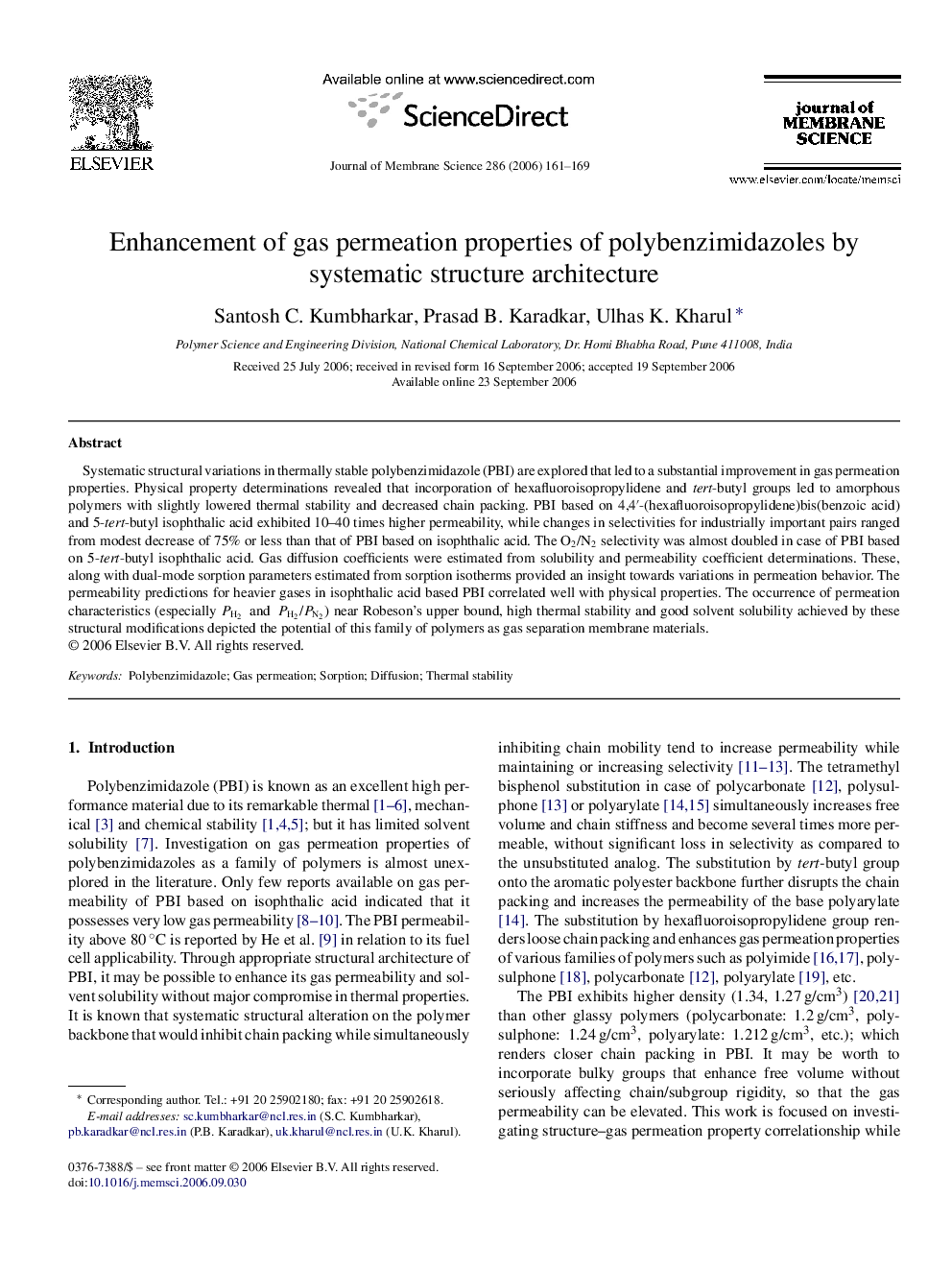| Article ID | Journal | Published Year | Pages | File Type |
|---|---|---|---|---|
| 638998 | Journal of Membrane Science | 2006 | 9 Pages |
Systematic structural variations in thermally stable polybenzimidazole (PBI) are explored that led to a substantial improvement in gas permeation properties. Physical property determinations revealed that incorporation of hexafluoroisopropylidene and tert-butyl groups led to amorphous polymers with slightly lowered thermal stability and decreased chain packing. PBI based on 4,4′-(hexafluoroisopropylidene)bis(benzoic acid) and 5-tert-butyl isophthalic acid exhibited 10–40 times higher permeability, while changes in selectivities for industrially important pairs ranged from modest decrease of 75% or less than that of PBI based on isophthalic acid. The O2/N2 selectivity was almost doubled in case of PBI based on 5-tert -butyl isophthalic acid. Gas diffusion coefficients were estimated from solubility and permeability coefficient determinations. These, along with dual-mode sorption parameters estimated from sorption isotherms provided an insight towards variations in permeation behavior. The permeability predictions for heavier gases in isophthalic acid based PBI correlated well with physical properties. The occurrence of permeation characteristics (especially PH2 and PH2/PN2PH2 and PH2/PN2) near Robeson's upper bound, high thermal stability and good solvent solubility achieved by these structural modifications depicted the potential of this family of polymers as gas separation membrane materials.
